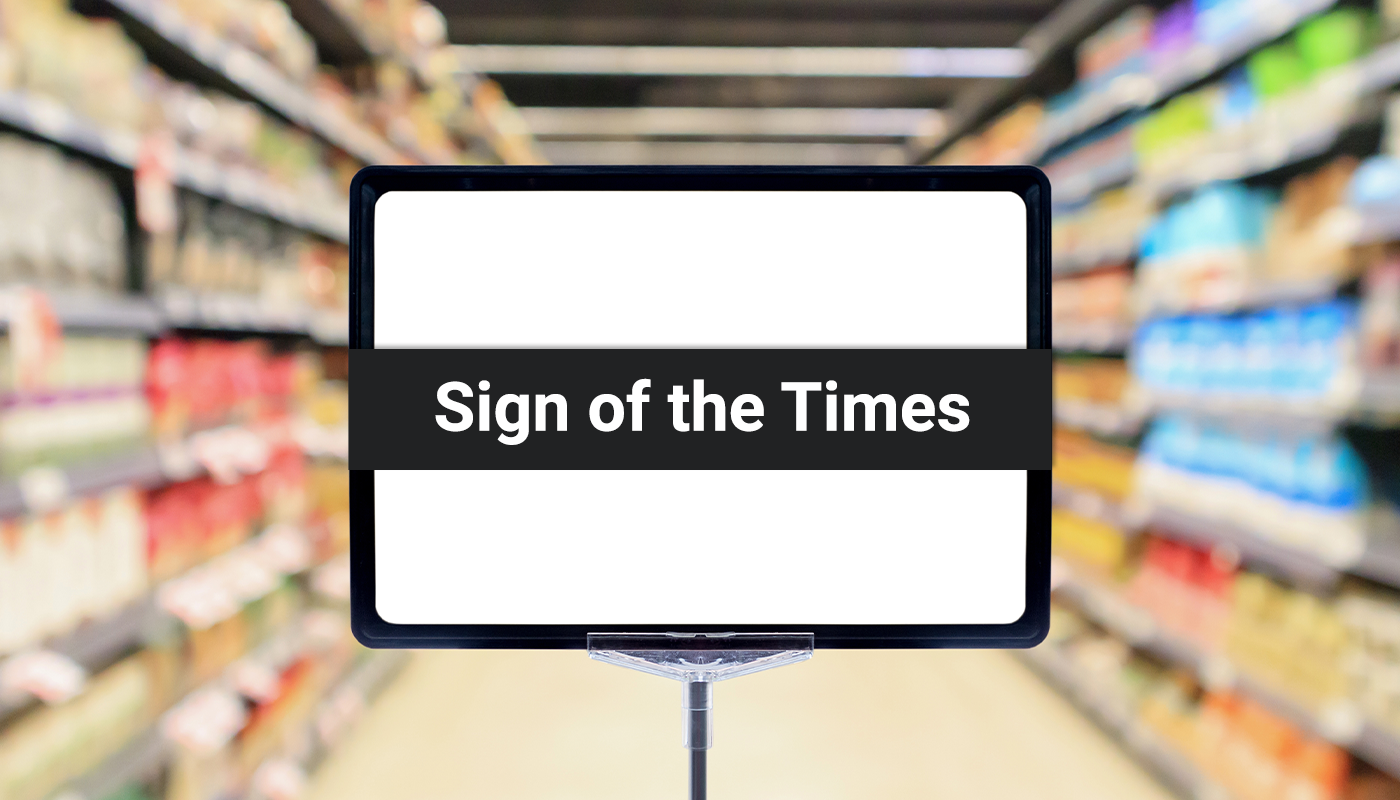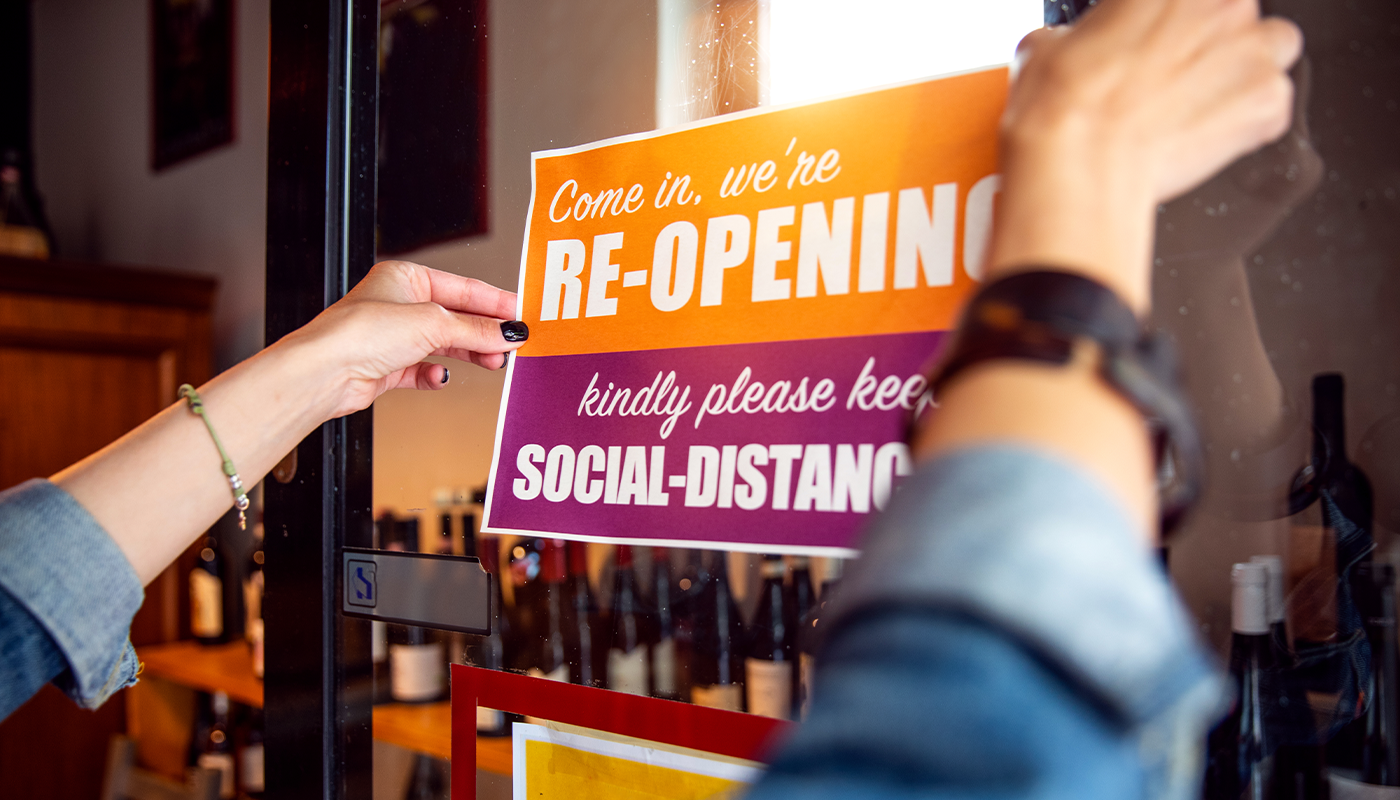Sign of the Times
CJ Haag
September 16, 2020

I’m sure everyone in America has noticed the increased use of signage in and on most stores, businesses, and restaurants since the COVID-19 pandemic began. But do you remember what it was like going into Target back in March before COVID was really a concern? Don’t get me wrong, COVID was a concern, but there wasn’t much information out yet. Even the WHO and CDC didn’t really seem to know how this virus was going to spread or affect everyone.
Then, suddenly, almost overnight it seemed, our world was turned upside-down. Retail and hospitality businesses were thrown for the loop of their lives. Rumors of a lockdown and quarantine began to swirl and all of America began hoarding toilet paper and buying up every non-perishable grocery item we could get our hands on. I know I personally couldn’t find toilet paper in a store for at least 6 weeks after this all started. Thankfully, I had just stocked up prior to the pandemic, but the idea of gathering leaves and brush outside was a real possibility…or, so I thought.
The importance of over-communication using signage during a pandemic.
Can you imagine if we had better signage early on? Particularly in the toilet paper and grocery aisles as we do now. You know, the signs that limit similar items to help keep shelves stocked and allow others to attain what they also are in need of? Or, the signage that we have outside of businesses, on the doors upon entering an establishment that say “if you have any new symptoms, please stay home,” and even the stickers on the floor that remind everyone to stay six feet apart? Maybe if we had signage early on there wouldn’t have been mass chaos every time you needed to go out for a few groceries and might possibly have even slowed down the spread of COVID even more. But no one knew the scale of what the pandemic would bring.
Now, most businesses have their establishments well decorated with signage. Whether it’s a sign that asks you to wear a mask upon entering or a sign that simply displays a change of hours and services due to the pandemic. Signs are popping up everywhere as they should be. Now more than ever, customers need to know what policies and protocols are in place for each business.

Signs are meant to be informative and alert customers to important information.
What’s Makes a Good Sign?
First, a sign needs to be informative, but not too wordy. Get your main points across without writing a lengthy paragraph. You don’t want to lose the interest of the reader by being too descriptive with unessential information.
Second, your signage needs to be seen. What’s the point of a sign if it is easily lost in the background or blends in with the environment? Keep your signage on brand, but use colors within the design that will make it stand out from its surroundings.
Third, don’t be afraid to over-communicate with your signage. For example, if your business has two doors at its main entrance, then post the same sign on both doors. Sometimes, people just don’t pay attention, and even when a sign is on one door of your entrance, but they use the door next to it, they may miss your message. It may seem silly, but this does happen often.
How can businesses best capture the attention of their customers?
You need to make sure that you’re speaking to your audience and not just the general public. Who is your audience and what do they respond to? For example, if your business has a laid back and fun atmosphere, then using a little humor and wit in your signage will grab the attention of your customers.
However, if you have a law office or a clinic, then perhaps staying on the professional and formal side for your signage information will be best appreciated by your audience.
How many signs should a business display?
If you are advertising special events or emergency information such as “closings” or a change in your services, then really the more signage you can display, the better. Obviously, you don’t need to plaster signs over every single wall, but put signage where your customers often congregate. Even the inside of bathroom stalls is a great place for important information.
Tip: Go to the outside entrance of your business and walk through your establishment. Imagine you are the customer. Where do you stop? What is your path? Where do your eyes fall? This is a great way to determine where your signage should go and how much signage that your business will need.
Conclusion
If you’re looking to modify or improve your signage strategy or if you need some assistance in creating a new sign design, then please reach out to Fuzzy Duck. We design signs every day for businesses just like yours and have helped many businesses through this pandemic with a well-planned signage strategy.